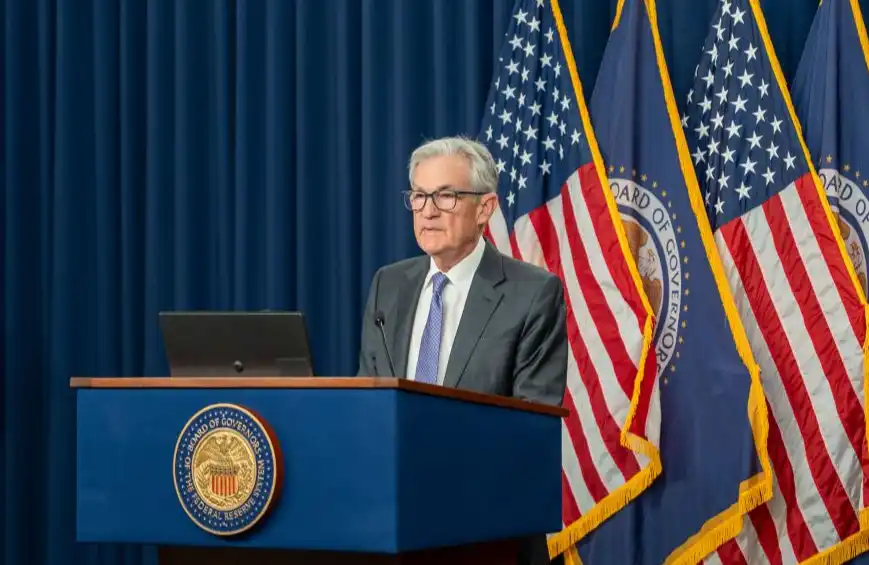The Looming Yen Strength: A Reassessment of USD/JPY and Carry Trade Risks
- UBS raises USD/JPY 2025 Q3 target to 140, citing Fed rate cuts vs. BoJ tightening and yen re-rating risks. - Carry trade unwinding triggered 14% yen appreciation, exposing vulnerabilities in global markets and U.S. tech stocks. - Japan's political uncertainty and U.S.-Japan trade dynamics could disrupt BoJ policy, creating volatility for yen positions. - Investors must hedge currency exposure and diversify portfolios as structural de-dollarization and policy shifts reshape FX markets.
The USD/JPY cross has long been a barometer of global monetary policy divergence. Yet, as we approach the second half of 2025, the dynamics underpinning this pair are shifting in ways that demand a recalibration of investment strategies. UBS's recent revision of its forecast—raising the Q3 2025 target to 140 from 135—reflects a nuanced interplay of dollar resilience, BoJ caution, and the specter of a broader yen re-rating. But beneath the surface, the risks of a strategic FX carry trade unwind and political volatility in Japan loom large, threatening to upend even the most well-considered positions.
Monetary Policy Divergence: A Tipping Point?
The Federal Reserve's anticipated rate-cutting cycle, expected to begin by late 2025, contrasts sharply with the Bank of Japan's (BoJ) tightening trajectory. While the Fed funds rate may fall from 4.75% to 4.25% by year-end, the BoJ's policy rate remains near 0.50%, narrowing the interest rate differential to 375 basis points. This compression has eroded the profitability of USD/JPY carry trades, where investors borrow low-yielding yen to fund higher-yielding U.S. assets. The unwinding of these positions, accelerated by the BoJ's July 2025 rate hike, has already triggered a 14% yen appreciation against the dollar, forcing a forced deleveraging in global markets.
UBS's revised forecast hinges on the assumption that this divergence will persist. The bank projects a gradual decline in USD/JPY to 140 by Q3 2025, with a year-end 2025 target of 130 and a June 2026 target of 136. This bearish outlook is underpinned by structural de-dollarization trends and the Fed's pivot toward accommodative policy. However, the near-term trajectory remains contested, with the 148-150 level—a key technical and psychological barrier—serving as a critical pivot point. If U.S. Treasury yields remain firm, the pair could test this range, but a breakdown below 146.60 would likely confirm a bearish bias.
Carry Trade Unwinding: A Systemic Risk?
The unwinding of the USD/JPY carry trade in early 2025 has already exposed vulnerabilities in global markets. Japanese banks' $1 trillion in foreign lending—largely directed to non-bank asset managers—poses a medium-term risk of orderly repayment and unwind. Meanwhile, Japan's $3.3 trillion net international investment position (NIIP) suggests that a full reversal of yen carry positions could exert structural pressure on U.S. Treasuries and global equities.
The immediate impact has been felt most acutely in U.S. tech stocks. The Nasdaq-100's 13% decline in late 2024, following the BOJ's rate hike, underscores the interconnectedness of currency positioning and equity flows. As investors hedge yen exposure, the demand for defensive assets—such as healthcare and industrial machinery—has risen, while momentum-driven strategies face heightened scrutiny. For investors, the lesson is clear: diversification and currency risk management are no longer optional.
Political Risks in Japan: A Wild Card
While UBS's forecast assumes a continuation of BoJ tightening, political uncertainties in Japan could disrupt this trajectory. Prime Minister Shigeru Ishiba's leadership faces potential challenges from more dovish factions, such as Sanae Takaichi, who might advocate for a return to ultra-accommodative policy. A shift in BoJ stance could abruptly reverse the yen's strength, creating volatility for investors with long yen positions.
The U.S.-Japan trade deal further complicates the outlook. While it may support Japan's economic growth and encourage rate hikes, it could also introduce headwinds for exporters, prompting the BoJ to adopt a more dovish stance. This duality highlights the need for investors to monitor not just monetary policy but also geopolitical developments that could alter the BoJ's calculus.
Strategic Implications for Investors
For those considering yen longs, the near-term key levels of 148-150 and 146.60 are critical. A breakout above 150 could signal a reversal of the yen's bearish trend, while a breakdown below 146.60 would likely accelerate the decline toward UBS's 130 target. Hedging strategies, such as short USD/JPY futures and options on yen-denominated assets, are essential for mitigating exposure to Japanese tech firms with declining overseas earnings.
Investors with USD exposure should also consider currency hedges, particularly in light of the Fed's expected rate cuts. The dollar's structural overvaluation, exacerbated by Trump-era tariffs and rising public debt, suggests further downward pressure. Swiss and eurozone investors, in particular, may benefit from hedging larger dollar positions to protect against yen strength.
Conclusion
The USD/JPY cross stands at a crossroads. UBS's revised forecast captures a world where Fed rate cuts and BoJ tightening drive a gradual yen re-rating, but the path is fraught with risks. Carry trade unwinding has already reshaped global markets, exposing the fragility of leveraged positions in U.S. tech. Political shifts in Japan and the evolving U.S.-Japan trade relationship add further uncertainty. For investors, the priority must be agility: hedging currency exposure, diversifying portfolios, and remaining vigilant to the signals that will determine whether the yen's strength is a fleeting phenomenon or the beginning of a new era.
In this environment, the 148-150 pivot level is not just a technical marker—it is a litmus test for the resilience of the dollar and the yen's emerging role as a safe-haven asset. Those who navigate this transition with prudence will find themselves well-positioned for the challenges ahead.
Disclaimer: The content of this article solely reflects the author's opinion and does not represent the platform in any capacity. This article is not intended to serve as a reference for making investment decisions.
You may also like
The Federal Reserve cuts rates again but divisions deepen, next year's path may become more conservative
Although this rate cut was as expected, there was an unusual split within the Federal Reserve, and it hinted at a possible prolonged pause in the future. At the same time, the Fed is stabilizing year-end liquidity by purchasing short-term bonds.

Betting on LUNA: $1.8 billion is being wagered on Do Kwon's prison sentence
The surge in LUNA’s price and huge trading volume are not a result of fundamental recovery, but rather the market betting with real money on how long Do Kwon will be sentenced on the eve of his sentencing.

What is the overseas crypto community talking about today?
What have foreigners been most concerned about in the past 24 hours?

Behind the 15 million financing, does Surf aim to become an AI analyst in the crypto field?
Cyber co-founder starts a new venture.
